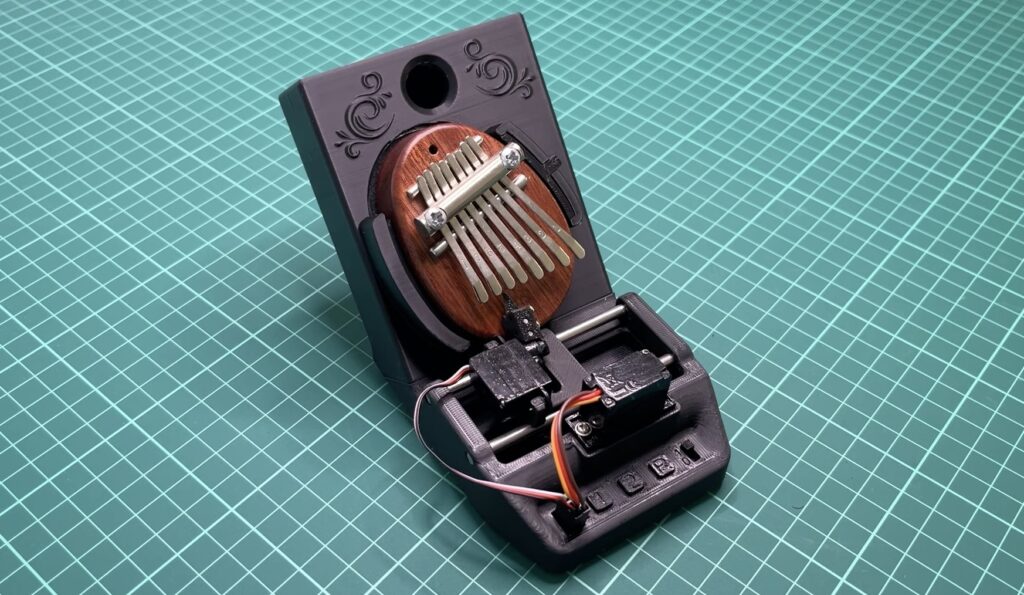This robotic kalimba plays melodies with an Arduino Nano

With roots in Africa, the kalimba is a type of hand piano featuring an array of keys that are each tuned for a specific note, and upon plucking or striking one, a pleasant xylophone-like sound can be heard. Taking inspiration from his mini kalimba, Axel from the YouTube channel AxelMadeIt sought to automate how its keys are struck and produce classical melodies with precision.
The design process started out with Axel determining the best mechanism for interacting with the small keys, and after hitting/plucking them using a range of objects, he settled on plucking individual keys with a small plastic actuator. Two servo motors were utilized to perform the action, with one motor sliding a gantry left-and-right, and the other moving a small plastic pick across the keys. Axel’s design underwent several iterations to get the sound correct since material thickness, the lack of a resonant backing, and a loud servo motor all contributed to reduced quality initially.
After perfecting the physical layout, Axel assembled the electronic components into a custom 3D-printed case, which includes spaces for the Arduino Nano, battery, charging circuit, and pushbuttons. The first two buttons cause the kalimba to play preprogrammed melodies, while the last one plays random notes with a random amount of delay in between.
The post This robotic kalimba plays melodies with an Arduino Nano appeared first on Arduino Blog.
